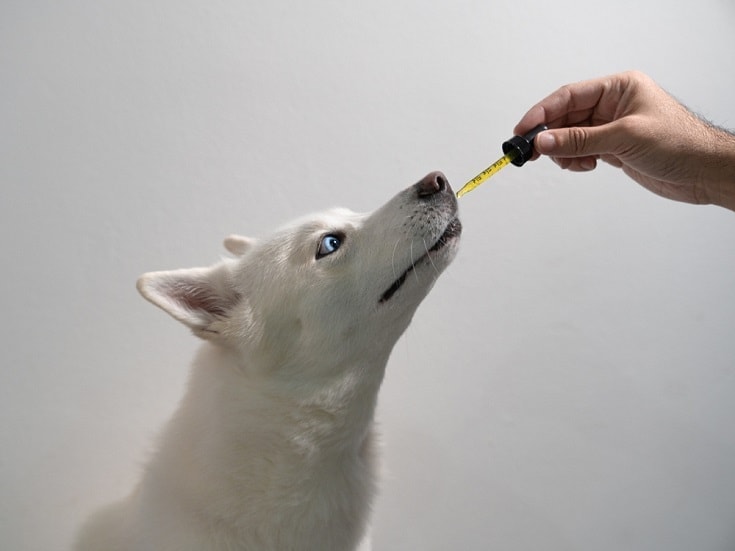Green Lipped Mussels for Dogs: Vet Approved Benefits, Side Effects & Safety
By Oliver Jones
Updated on

Click to Skip Ahead
While veterinary medications have come a long way in managing osteoarthritis (OA) in dogs, we’ve only recently discovered an extremely safe and effective therapy that has been hiding under our noses in nature the whole time. You may not have even heard of green-lipped mussels, but if your dog shows signs of joint pain, it could be an excellent adjunctive therapy to mainstream medication. Always ensure that you visit your veterinarian if you are concerned that your dog is suffering from arthritis. A correct diagnosis is vital to ensure the best treatment is given.
What Are Green-Lipped Mussels?
Green-lipped mussels (Perna canaliculus), named for the iridescent green band along the shell’s edge, are a New Zealand mollusk species. In the 1970s, interest in Green lipped mussels (GLM) arose when scientists noticed their effect on the island’s coastal Maori people. Researchers discovered, green-lipped mussels reduced the susceptibility of people to arthritis and joint pain thanks to a uniquely rich array of vitamins, minerals, and fatty acids.
- Eicosatetraenoic acid (ETA): An omega-3 fatty acid that binds to inflammation-causing enzymes
- Docosahexaenoic acid (DHA) and eicosapentaenoic acid (EPA): Anti-inflammatory fatty acids contributing to heart, immune, and cognitive health. They are thought to decrease the production of pro-inflammatory proteins.
- Chondroitin sulfate and glucosamine, thought to build, protect and support healthy cartilage
- Zinc
- Magnesium
EPA and DHA is found in other fish oils, but ETA is an additional fatty acid that is found in green-lipped mussels.
Science on GLM for dogs has only been around since the early 2000s, but numerous studies have proven its promise as an effective adjunctive therapy to non-steroidal anti-inflammatory drugs (NSAIDs) for osteoarthritis relief, that are available from your vet. GLM is thought to improve mobility, flexibility, and joint strength while reducing painful inflammation, although more powerful studies on dogs are needed to prove this. The supplement is non-prescription. GLM products such as Super Snouts Joint Power Powder or Zesty Paws Mussel Mobility Bites are easy to find online.

How Are Green-Lipped Mussels Given?
Green-lipped mussels are usually available as whole mussels, powders, oils or tablets produced through a freeze-drying process that preserves their nutritional benefits.
Daily doses vary between companies. The daily dosage of GLM is about 300–500 mg for small dogs, 600–1,000 mg for medium dogs, and 1,200–1,500 mg for dogs over 75 pounds. It is safe for your dog to take at any age and with other medications. Small dogs typically take one dose daily, while large dogs may take 2+. GLM is only one part of a balanced approach to osteoarthritis management, alongside effective pain relief, a modified exercise regime, weight loss and more holistic therapies such as hydrotherapy and acupuncture.
What Happens If You Miss a Dose?
The chances of negative effects from missing a daily dose of green-lipped mussels are low. It has no withdrawal signs, and if your dog skips the occasional supplement, it shouldn’t substantially impact their comfort or well-being.
Potential Side Effects of Green-Lipped Mussels
Green-lipped mussels are garnering well-earned attention for their effectiveness and notable lack of side effects. Mainstream NSAIDS e.g meloxicam may cause an upset stomach or diarrhea in some dogs, although most dogs tolerate them very well. Many studies into NSAIDs in dogs show they have a good efficacy, but in some dogs, their side effects may have owners looking for other options. GLM do not generally have any side-effects.
Dogs with rare shellfish allergies may experience adverse effects, including diarrhea, vomiting, itchy skin, and sores. Monitor your dog closely when giving GLM for the first time. Most products recommend contacting your vet in case of an accidental overdose.
Frequently Asked Questions (FAQs)
How Long Does It Take for Green-Lipped Mussels to Take Effect?
Aside from possible GI upset, green-lipped mussels won’t immediately affect your dog. Improvement in mobility and consistent pain reduction generally occurs within 1.5–2 months. Results may vary, with some dogs taking less time to show positive change and others taking several months to show significant improvement, if any.

How Common Is Osteoarthritis?
Osteoarthritis is the most prevalent type of arthritis in dogs, affecting roughly 20% of dogs over the age of one. Senior dogs and those that are overweight are are more likely to show signs ofOA, but the potential to develop the disease can depend on several factors, including:
- Genetics – breeds such as Labrador and Golden Retrievers, and Rottweilers have an increased risk of developing OA.
- Conformation
- Dysplasia e.g. hip dysplasia
- Weight
- Over-exercising while growing
- Repeated overexertion, such as from agility sports, ball throwing
- Bone breaks and dislocations
- Ligament ruptures
- Infections
Primary arthritis usually has no known cause (idiopathic) but can be associated with obesity and age. Secondary OA is the more common form of OA in dogs and is believed to have a genetic component that is exacerbated through a disease process, obesity or traumatic event. An example of this would be elbow dysplasia. Elbow dysplasia is more common in large breed dogs e.g. Labrador Retrievers. The incorrect alignment of the elbow joint predisposes the dog to develop osteo-arthritis and the pain associated with it.
Common signs of OA in dogs include:
- Stiffness or limping
- Difficulty standing
- Hesitancy to go upstairs, jump, or run
- Weight gain
- Increased urinary or fecal accidents in the home
- Sensitivity when touched on specific body parts
- Increased aggression
Identifying early signs of OA isn’t always easy, as dogs sometimes hide their discomfort. Close attention is crucial, especially with aging dogs. Frequent checkups and conversations with your vet about risk factors will help you stay responsive. Osteoarthritis is progressive and incurable, but with early action, you can slow its advancement, reduce inflammation, and improve your dog’s quality of life.

What Are the Side Effects of NSAIDs?
Nonsteroidal anti-inflammatory drugs relieve pain and reduce inflammation by reducing the body’s production of inflammatory proteins, namely prostaglandin. They are the treatment of choice for dogs with OA or those recovering from surgery. Although NSAIDs don’t adversely affect every dog, they can be responsible for several significant GI side effects, including:
- Diarrhea
- Vomiting
- Gastric or intestinal ulcers
If used inappropriately (at an incorrect dose or in a patient with other illnesses), NSAIDs can cause liver and kidney damage. Therefore, before starting long-term NSAID therapy, dogs must undergo a thorough clinical exam and blood tests to ensure they are as safe as can be. Green-lipped mussels have the benefit that they can be used in patients for whom NSAIDs are not appropriate.
Conclusion
Green-lipped mussels can be an excellent supplement to help a dog with OA live as comfortably as possible for as long as possible. However, it is extremely important that you take your dog to the vet for a thorough examination if you notice he is uncomfortable. If your dog is diagnosed with osteo-arthritis, your vet will be able to give you advice on the best supplements and pain relief options for your pup.
Adding GLM to a health-centric routine alongside adequate exercise and a high-quality diet can give your dog a better chance to delay, slow down, or even prevent osteoarthritis progression.
Featured Image Credit: Valery Evlakhov, Shutterstock












